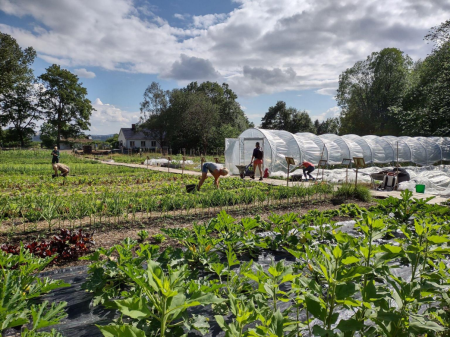
Area characterisation:
The CSA is located on a historic farm in an area in the east of the city where household incomes are lower than average. It covers approximately the size of a football field (8,000m2) which is owned by a private foundation and run by a museum (Museene i Akershus – MiA). Key institutions such as schools, a kindergarten and a shopping centre with a regional office and a meeting place for local NGOs are its closest neighbours. Public transport and a motorway are close to the site.
Objective:
Maintaining a CSA initiative with 80 members with a special discount for low income households and social initiatives.
Potential impacts/benefits:
Promote knowledge about production and consumption of organic produce.
Actions:
- Providing a meeting space for locals to plant and harvest together
- Creating an example of how consumers and farmers jointly take responsibility for food production
- Organizing visits from local schools and kindergartens
Contacts:
edicitnet-coordinator@eurtd.com
Global goals:
-
1. No poverty
-
2. Zero Hunger
-
3. Good Health and well being
-
4. Quality education
-
5. Gender Equality
-
8. Decent work and economic growth
-
9. Industry, innovation and infrastructure
-
10. Reduced inequalities
-
11. Sustainable cities and communities
-
12. Responsible consumption and production
-
13. Climate action
NBS goals:
- Enhancing sustainable urbanization
- Improving risk management and resilience
- Nature-based solutions for improving well-being in urban areas
NBS benefits:
- Developing climate change adaptation; improving risk management and resilience
- Developing climate change mitigation
- Restoring ecosystems and their functions
- Increased cultural richness and biodiversity
- Enhancing sustainable urbanisation
- Creation of green jobs relating to construction & maintenance of NBS
- Increase accessibility to green open spaces
- Increase amount of green open spaces for residents
- Increase awareness of NBS solution & their effectiveness and co benefits
- Increase communities’ sense of ownership
- Increase social interaction
- Increase stakeholder awareness & knowledge about NBS
- Increase well-being
- Increase willingness to invest in NBS
- Provision of health benefits
- Social inclusion
- Social learning about location & importance of NBS